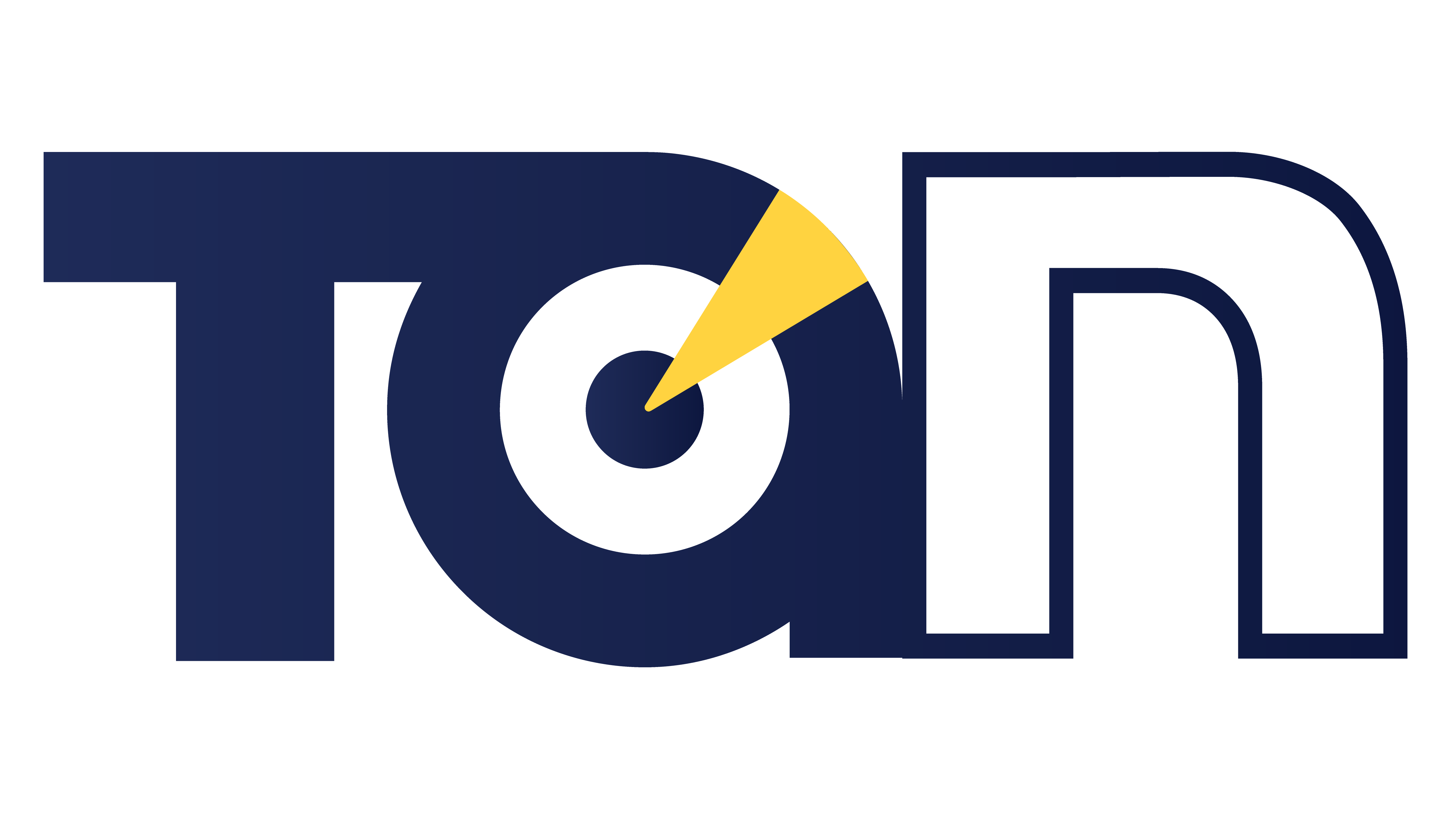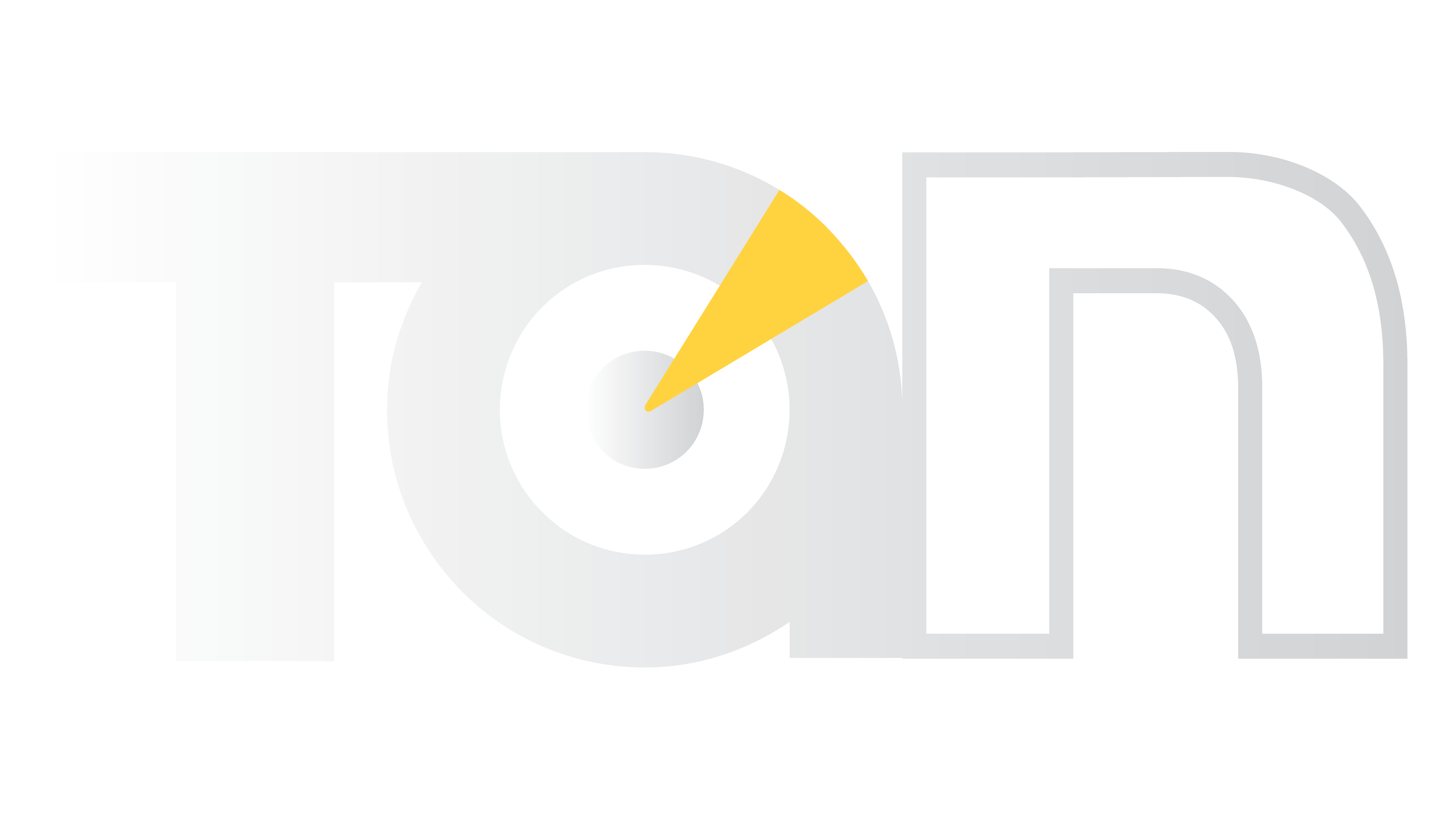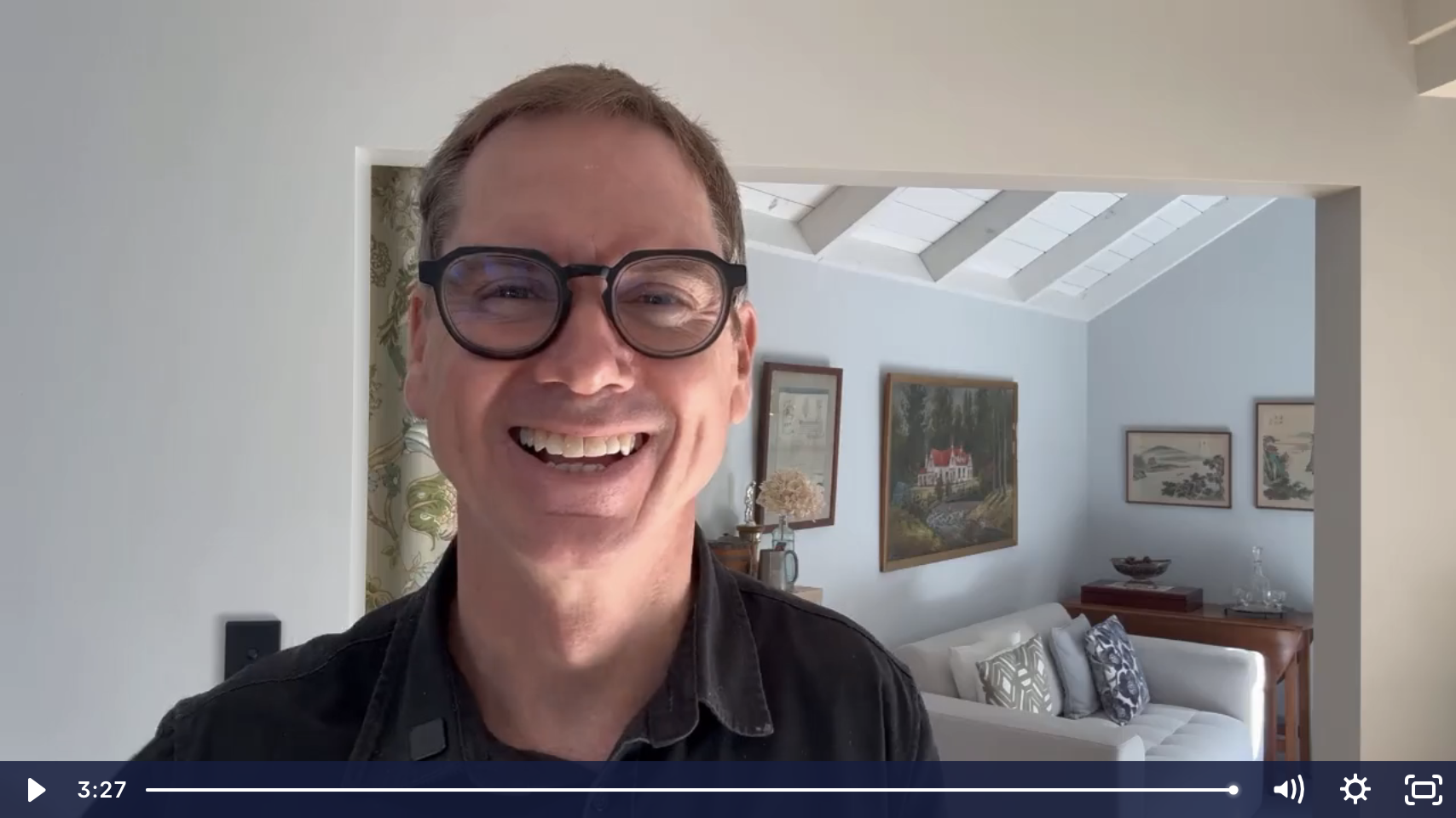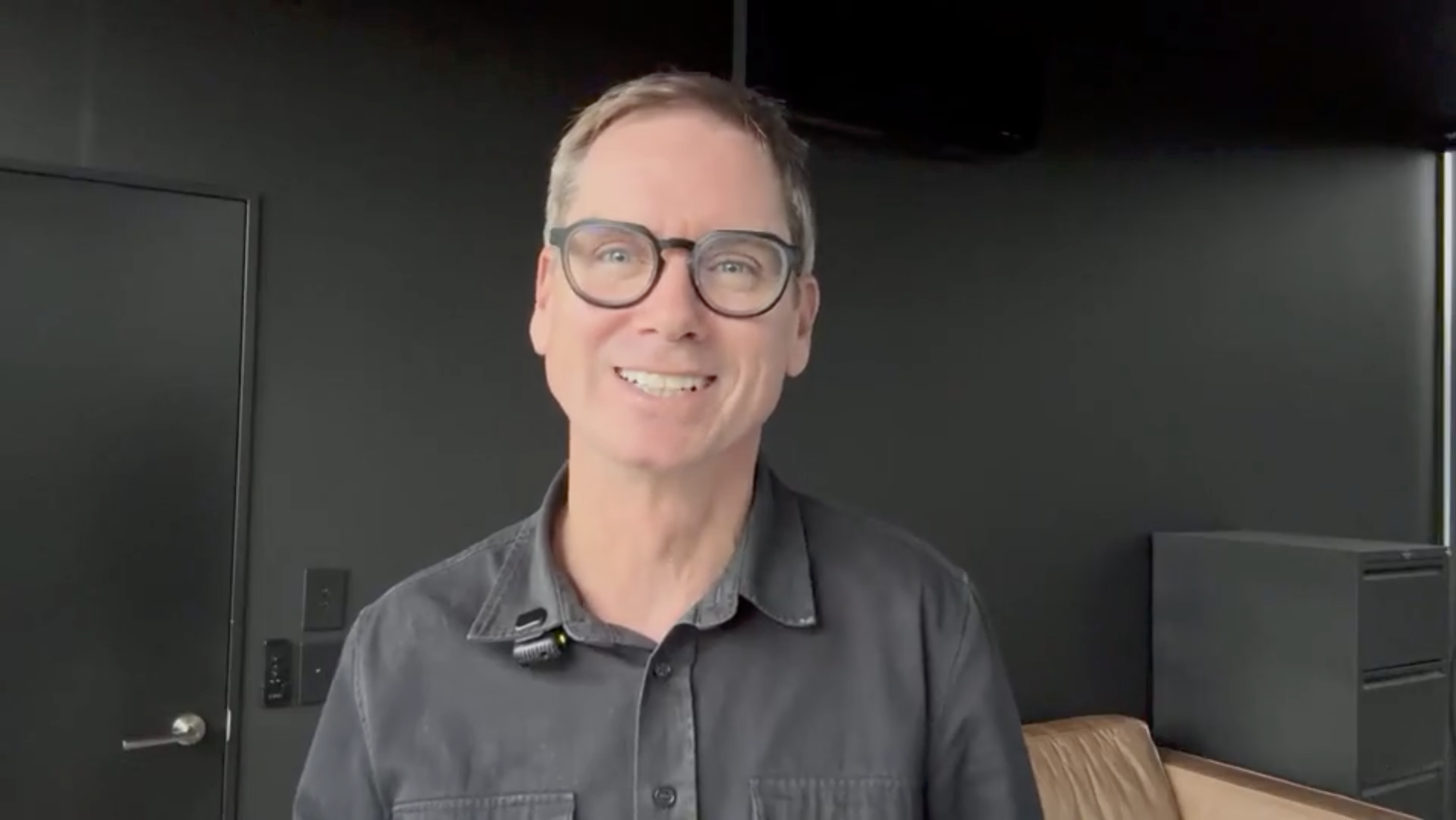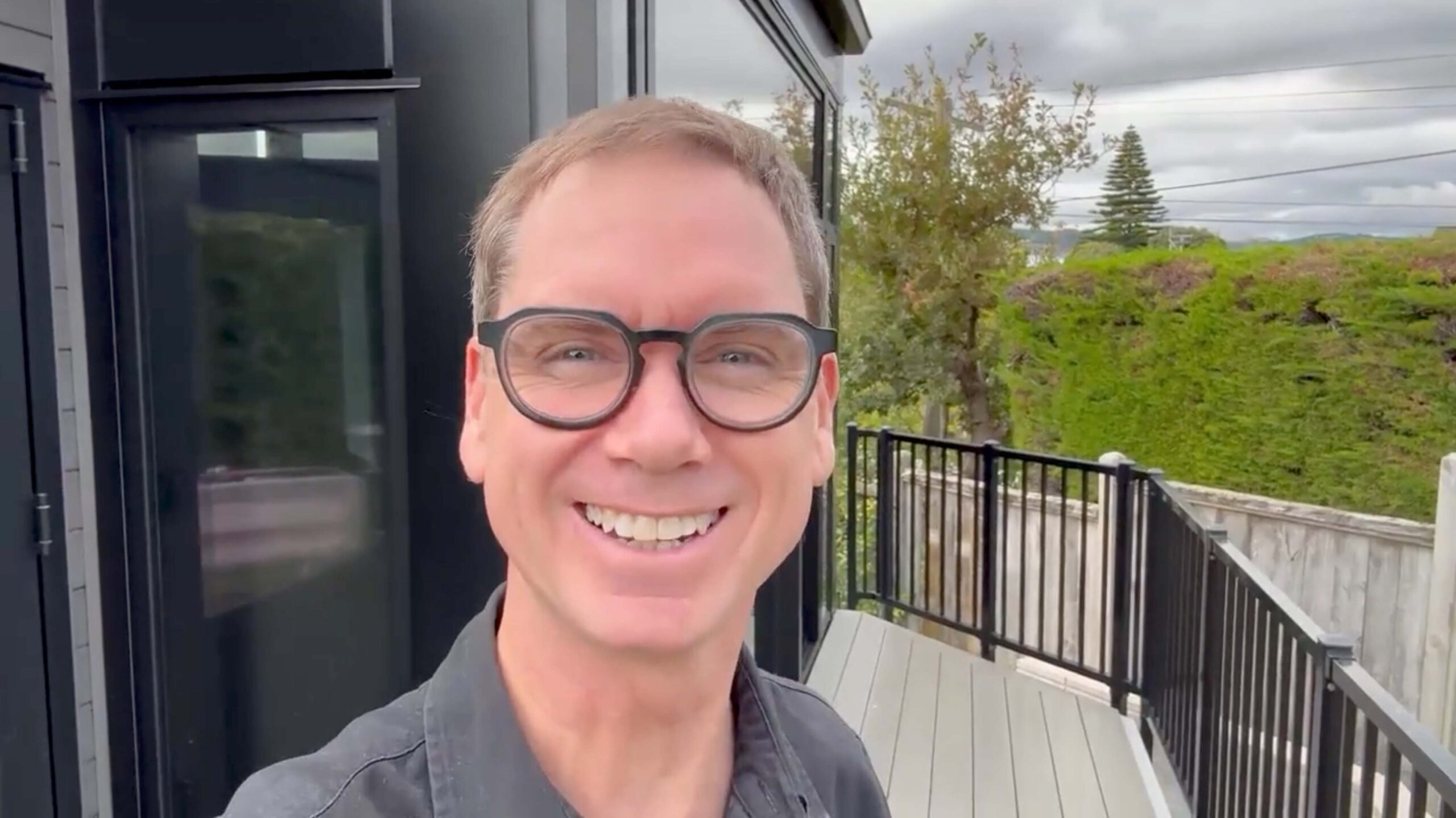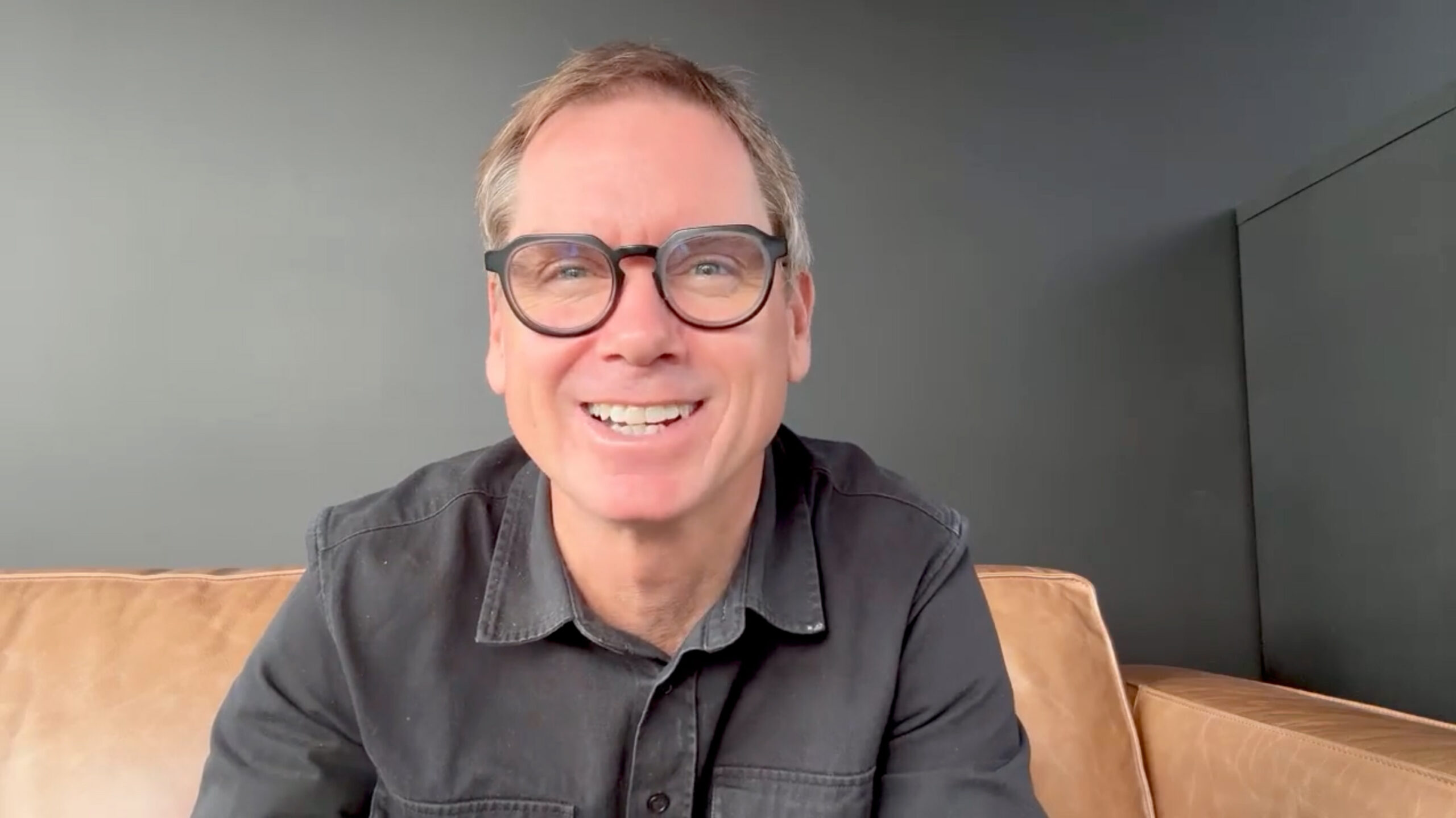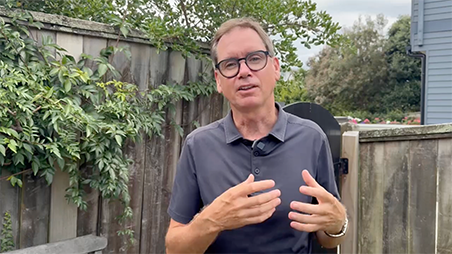You’ve Got the Skills. Here’s How to Price Them So You Actually Get Paid What You’re Worth.
You’ve Got the Skills. Here’s How to Price Them So You Actually Get Paid What You’re Worth.
It’s Will here from Trusted Advisor Network, and I wanna talk about something that a lot of smart, experienced business people run into the moment they try to turn what they know into something they can sell.
You’ve probably got a strong background—maybe you’ve managed teams, run businesses, built stuff from the ground up, or helped companies through big changes. And now you’re looking at business advisory and thinking:
“I know this could help other business owners—so how do I package it up in a way that actually makes sense… and makes money?”
That’s where pricing comes in. And to be honest, it’s one of those things that sounds a bit boring on the surface—but once you get it right, it completely changes the game.
So let’s talk through it.
There are four main pricing models I see all the time in the business advisory space. Let’s break ‘em down.
1. Hourly or Day Rate
This one’s the default.
You set a rate—maybe $200, $300 an hour. Maybe $1K to $2K a day. You go in, you do the work, you get paid.
It’s simple, and it’s easy for clients to understand. But here’s the problem:
When the job’s done, the money stops.
You’ve gotta be in the room, doing the thing, to get paid.
Which means no leverage, no compounding, and no time to breathe.
It’s a short-term fix that doesn’t build a long-term business.
2. Project-Based Pricing
The next one is charging per project.
You sit down with the client, scope out what they need, set a fixed fee, and deliver the result.
It’s tidy. Everyone knows what they’re getting. But it comes with the same issue as hourly work:
Once the project’s done, you’re back to square one.
You get stuck in the cycle of doing the work → chasing the next gig → doing the work again.
It’s busy. It’s draining. And it doesn’t leave much room to grow.
3. Courses and One-Off Programs
This one’s a favourite for people who want more leverage.
You take what you know, you turn it into a course, and you sell it as a product.
Clients like it because it’s structured. They can see exactly what they’re getting.
But here’s the catch:
It still ends.
Whether it’s a 6-week course or a self-paced program, at some point, the delivery wraps up—and you’re back to finding the next batch of clients.
So again, you’re not building continuity. You’re just resetting the clock.
4. Retainers and Continuity Programs
Now this is where things start to click.
Instead of short-term projects or one-off courses, you build a long-term relationship.
You set up a program where the client pays a fixed amount every month—not for a single deliverable, but for ongoing support, accountability, and real results over time.
Here’s why that matters:
-
You’re not starting from scratch each month
-
You can plan your income
-
And your clients get better outcomes because you’re there to help them implement, adapt, and stay on track
This is where you move from being a consultant-for-hire to being their go-to partner.
And the numbers stack up fast.
If you’ve got four clients on retainers worth $25K a year, that’s a $100K advisory business.
Double it? $200K.
And you’re still working with a small, manageable group of clients that you actually like.
So What’s the Best Fit?
Depends on what you want to build.
If you’re after flexibility, leverage, long-term relationships and real impact—retainers are the way to go.
But whichever model you use, just make sure you’re not underselling your experience.
You’ve got decades of know-how. You’ve done the hard yards. Price it in a way that reflects the value—not just the time.
So you know how to fix and grow businesses… but do you have the skills to be a successful Business Advisor?
So you know how to fix and grow businesses… but do you have the skills to be a successful Business Advisor?
So you know how to fix and grow businesses… great! But what are the skills you need to acquire that will give you the base you need to be successful as a business advisor. You’ll probably have an idea of what “coaching” skills are. But technically, what does a professional business coach know how to do, that maybe you don’t?
There are four areas where a professional business coach will have strong skills that are worth having a look at… especially if business advisory is a track you’re thinking about.
Firstly, a professional business coach has a set of beliefs that are different to most people. I call it being an “unreasonable friend”. Maybe you’ve got a friend who always seems to have an unreasonable expectation that you’re capable of more, no matter what! They believe in you for sure, but they expect you to be smashing it and they don’t listen to any lame excuse from you if you try and push back on them. That’s what the best business coaches are like… an “unreasonable friend” where their permanent belief is “nice, need more!”
Secondly, a professional business coach knows how to make the complex, simple and the simple, compelling. And the way they do that is by drawing simple models and using simple formulas. Check out my latest video for an example that uses a simple triangle… every industry is made up of many businesses. They’re all in the same industry with the same opportunities, but depending on how the businesses are run, you’ll see very different results. So, the top 20% of businesses end up making 80% of the money, while the bottom 80% scrap around for only 20% of the money. This is true for local plumbers, in the same way it’s true for companies like Apple. The question is, what do these guys know, that these guys don’t… and how do you get above the line if you’re stuck down here. PAUSE, can you see if you’re a local plumber, you probably want to know the answer… it’s compelling! And all I needed was a triangle and a line to make the complex, simple and the simple compelling. Coaches are great at using models!
Thirdly, professional business coaches are awesome at profiling tools. When you know how to use tools like DISC and Values profiles, it means you’ll know systematically how to motivate and challenge your clients based on their profile. This means you’ve got an unfair advantage when it comes to getting high performance out of your clients. These tools are so powerful when you know how to use them that you can literally predict what your clients will be doing to sabotage their success. And when you point it out to them, they can’t hide and that’s where break-throughs happen. Profiling tools are very powerful in the hands of professional business coaches who know how to use them.
Last one, professional business coaches have perfected what I call “the art of the ask”. They know how to string questions together in a very specific sequence that causes people to become very focused and clear on the actions that they need to deliver for their coach. Most question-based sequences are based on a very old coaching process developed by John Witmore called the GROW model. G stands for “Goal” based questions such as “what’s the outcome you want but don’t have?”. The next letter in GROW is R which stands for “Reality” based questions such as “what’s the current situation that you’re not happy with?”. These first 2 parts of the GROW model are designed to get a gap. No coaching is possible without the person being coached acknowledging that they have a gap between what they want vs what they have. Now we can ask questions about Options, that’s what the “O” stands for in GROW. Questions such as “so what could be done to close the gap?”. Then the last type of coaching question is where the accountability comes in with “What will you do based on the options we’ve talked about?”. GROW gives you a simple framework for your questions and professional business coaches are masters at this. Questioning sequences is a core skill and often the hardest to learn especially if you’re used to being the person with all the answers!
That’s the advantage professional business coaches have over people who have great business backgrounds. Four skills… beliefs, models, profiles and questions… and they’re all learnable!
Your corporate background is both your biggest asset
Your corporate background is both your biggest asset and your biggest hurdle when it comes to working with small businesses…
Your corporate background is both your biggest asset and your biggest hurdle when it comes to working with small businesses… what do I mean?
It’s your greatest asset when you have clients—because you know how to spot problems and opportunities and fix them fast.
But just because you know how to help doesn’t mean a business owner will want your help—or pay for it.
So where’s the hurdle?
It shows up when you’re trying to get clients.
During acquisition, your background often works against you.
Let’s say you ask a business owner, “How’s business?” and they say: “It’s a bit tough—cash flow is tight, staff are hard to find, and I’m always busy.”
What’s your instinct?
Fix it! Cash flow. Staff. Time.
You immediately start thinking through solutions: pricing, debtors, SOPs, time management, delegation…
Because that’s what you’re good at, right?
And yes—it would all help if they were already a client.
But it doesn’t work when they’re a prospect.
Why not?
Because business owners defend their position.
You might be right, but they can’t just say, “Oh wow, great point—I feel silly for not thinking of that.”
They’ll think:
“How would you know?”
“I already tried that!”
“Don’t you think I’ve thought of that before?”
They don’t want to be fixed—even if they need it.
That’s the hurdle: you’re wired to solve problems, but people don’t buy advice just because it’s right.
So what gets them to buy?
When they ask you for help.
When they own the problem.
That’s the key shift—from fix-it to coach.
Coaching is about helping people see what they need help with—not telling them.
And that’s what I want to show you—how a simple model can change the dynamic completely.
Let’s say you take a coaching approach instead.
You assume every business owner has some combination of a time, team, or money problem—because 90% of the time, that’s true.
Now listen carefully and draw what they’re saying.
“So… you’re here in the middle… you’ve got staff issues, so you’re trying to get more out of the team… things are tight, so you’re trying to generate more cash… and you’re super busy, trying to manage it all.”
No judgment. No fixing. Just reflecting.
Then ask:
“That sounds tough… of these three—team, time, or money—which is the biggest challenge for you right now? How long’s it been like that? What’s it costing you—in time, money, headspace?”
Let them talk.
Then you say:
“Some business owners seem to make it look easy. They run what we call the Ideal Business Cycle… The owner looks after the team, the team look after the customers, customers look after the business, and the business looks after the owner. Sound better?”
If they say: “Yes—but how?”
Boom. They asked.
That’s the shift.
That’s how you move from being right to being invited.
And that’s how clients come onboard—by choice.
Number 1 Reason For Leaving Corporate Right Now
Number 1 Reason For Leaving Corporate Right Now
I speak to many people in corporate positions who are really well paid. They’ve got MBAs and well qualified, and they’ve got a ton of status in their roles. And my question is, like, why are you looking to leave? And the number one thing that comes up is culture.
Things have changed in the company. They don’t believe that the changes are for the good, and it’s just a clash. And they decide that they just can’t do it anymore. I’ve just come back from a four day training in Brisbane where we trained eight new business consultants to enter the local business market.
And in the training room, we had CEOs, ex MDs.
We had people who were serial entrepreneurs that had multiple businesses.
And a big reason for changes kept on coming up time and time again was this whole thing about culture. I want to share a couple of these stories and see if they resonate with what’s happening in your world at the moment. Like there was an ex CEO, and he was working for a large family business and the family business got sold and straight away, big culture changes. And he got to a point where he’s just like, I can’t do this anymore.
Well, how about this? This is a really amazing story. Ex managing director, he had negotiated with staff, quite a big staff, six hundred k worth of bonuses because there were all these strikes happening, and the business interruption was costing the corporation an absolute fortune. So they negotiated these great bonuses.
Everyone was happy. Productivity went through the roof. All the strikes, no longer. Everyone was getting on great, except when new leadership came in, and they saw six hundred ks in the p and l.
And in the cost cutting measure, they said, well, what’s that for? Well, that’s gone. We don’t need that. Now in a heartbeat, all the industrial action came back.
All the productivity went down the sink, and all the goodwill that had been built up over years of negotiating, completely evaporated in in one cost cutting move. Another example, there was a senior exec there, in the training room, and he told me about a situation where they had a really strong point of difference against them and the competitors. Same thing again. New new restructure came through, and and suddenly that point of difference with their with their customer base, just the focus went completely away from all of that.
And what it meant is that whole point of difference, gone. So guess what? they’re competing on now because they don’t have that point of difference. It’s just a race to the bottom on price. So these are culture changes that really affects people.
And I think when people ask themselves the tough questions of, am I happy doing what I’m doing? Am I still excited about it? Do I feel like I’m making a difference?
And ultimately, does what I do actually matter? These are the sorts of things that a culture will either have people behaving into or behaving out of. So my question to you is, what are the sorts of culture changes that you’re seeing, for better, for worse?
How are incentives being managed in your business in terms of for performance? How is that working in your workplace? Has it changed? Does it still work for you?
Do people still feel motivated about that? Or what about the whole team engagement side of things? Is there a high care factor? Or is it just some sort of HR tick box thing that you have to sort of jump through?
And same thing about values. Have you seen values changing? You know for yourself, you live with a set of values and you do your best to align those values with the people that you’re working with. How’s that changed?
If it has, let me know. I’d love to hear from you. So that’s my thoughts around culture. I think it’s one of those magical things.
It’s quite hard to articulate. When you’ve got it, everyone feels great, but it can change just in a heartbeat. Change a leader. Change a culture.
Let me know what’s happening in your workplace. Love to hear from you!
Big End of Town vs Small
Big End of Town vs. Small
I’ve had a quite a few people ask me about how their “Big End of Town” experience translates to working with “Small End of Town” clients…
Or put another way, what happens when corporate thinking is applied to small businesses… is it oil and water or more like gin and tonic (meaning very compatible!)
So, I thought it makes sense to talk about the biggest differences I’ve seen between corporate and SMEs to see what you think!
OK here’s four of the biggest differences I’ve seen between corporate and SMEs…
1. Big end of town means lots of resources, well established revenue lines, systems for much of the operational parts of the business and they can afford salaries to recruit high calibre people for key roles… that’s def different to the small end where resources are limited so you need to WAY more resourceful. So, when you’re working with SME’s it just means you need to imagine that there’s likely to be ONE person putting into place the strategies you’re sharing, not a whole team… that’s a difference!
2. Corporate is also very focused on KPIs and the cycle of annual budgets, reporting for monthly board meetings, quarterly reviews for actual vs budget forecasts, reports and structured performance assessments. You’re basically under scrutiny the whole time… that means there’s a lot of information and access to information that you kinda take for granted in corporate. In SMEs you’ll need to dig for information because they just don’t collect or analyse it but in fact that’s one of the biggest areas where you can add value to coz when you get the info you need it makes decision making really easy…
3. In corporate there’s also relatively slow decision making and plenty of hurdles if you want to do anything new or perceived as risky. That means there’s a lot of reports and number crunching that has to support any new initiatives… again, very different. Small business will make a decision in a heart-beat and want it done the same day… so if you’ve ever been frustrated that the lag between idea to execution in corporate is glacial, you will love working with owners. They make decisions FAST!
4. Apart from that when it comes to similarities, it’s business so the principles are exactly the same… so every business needs to drive revenue, control costs and manage the overhead. So, all your sensibility about this is perfect… the only difference here is that you don’t have a specific person or department in charge of each area. That means you need to work on these things one at a time e.g. JUST work on cost controls until you get a result THEN work on driving revenue coz if you try doing them both at the same time it doesn’t work which comes back to my earlier point of needing to be RESOURCEFUL when you don’t have RESOURCES…
Quick summary…
If you love quick decision making… Small end of town EATS big end for this… you could double or triple client’s business whereas in corporate you’re sometime tracking inflation.
If you can think like an entrepreneur that lacks resources but has a heap of resourcefulness, then that mentality will work really well for you.
If you’re used to being able to find information and use it for helping to make decisions then again, this will serve you really well.
And lastly, if you’re great at prioritising what needs to be done and can sequence out tasks for implementation, then SME’s will love you forever.
Hope that helps?
What are some of the other similarities and differences you’ve seen…
Niche or No Niche
Niche or No Niche
Yesterday I got asked about what my advice would be around a niche… the person asking had a few clients who were lawyers and wanted to know if he should work exclusively with a single client avatar…
Great question! Ever wondered the same thing?
Seems like the answer should be YES… marketing 101 is to niche so I thought I’d share what I shared with him…
The benefits if you get niche right…
Your marketing is laser focused… easier
Your program material is dialed in… helpful
Your become a known expert… great!
But not many people talk about the downsides of niche…
What if someone wants help who’s not in your niche… do you just say “no”
What if your niche sees you working with their competition and say “no thanks!”
The marketing style to drive your niche is a big commitment
That last point is probably the biggest… to really drive your niche means a style of marketing that may or may not fit with your personality.
I’ve taken a number of people through the process of niching and this is what I’ve learned… You need to be:
Big on Camera… you’ll need a ton of content so you’ll be in front of a camera a lot
Big on Socials… you’ll need to be across platforms that all have their differences
Big on Personality… the people that make this work are like micro-celebrities
Big on Ad Spend… you won’t be the only one so you’ll need to outspend them
Big on Tech… you and a VA are not going to cut it – there’s a lot of tech support
It’s actually MORE about the marketing persona than it is about the content of your program to your niche.
There’s definitely a type of person that this is a good fit for, but… if the idea of this style of marketing leaves you cold, then what are your options?
Well within TAN I’ve seen people try a niche, come up against what I’ve talked about, and go back to no-niche… but is it really no-niche?
What I’ve seen work best is the niche of LOCAL… it’s so under-rated as everyone thinks a niche by business-type is better. But what we’ve found is that local business owners that you meet in-person with a strong sales process is by far the most lucrative and the fastest way to build a strong client base.
But what if you have expertise in a niche like the guy who was asking about specialising in Lawyers?
The way I’ve seen it work best if you have a background that would suit a niche is to operate your niche as a super-premium option.
I’ll give you a couple of examples:
There’s a guy in our network who specialises in a specific industry because he built and sold his business to a very large company… he can help clients with M&As and prep for sale. So, while he has MAINSTREAM local clients, he has PREMIUM clients that pay him a lot of money for his expertise.
Another example from our network is a member who has a CFO background. Again, he has MAINSTREAM local clients but has PREMIUM clients who pay him up to $10K a month for his help.
So that’s my advice for niche… offer it as a PREMIUM service and have the LOCAL niche as your mainstream service. The marketing is less daunting and it means you can say “yes” to working with more clients sooner…
4 Mistakes New Advisors Make That Cost Them Clients (& Exactly How to Fix Them)
4 Mistakes that New Advisors Make & How to Avoid Them
1st Mistake is no sales process… “just put me in front of people and I’ll be fine” is not a strategy! Think about it, your would-be client is doing the best they can and you think you can do a better job because of your background… what would your reaction be if someone implied they could do a much better job than you… at worst you’d think they were arrogant at best you’d be at least a little bit defensive. That’s not helpful if you’re trying to sell your services! But it’s a common mistake and that’s why new advisors get a 1 in 20 conversion-rates. We’ve spent the last decade refining our sales process for getting new clients so our conversion rates are 1:2. Think how much time this saves when you’re signing every second client rather than every 20th… that’s a lot of burnt leads you’re saving!
2nd Mistake is wrong pricing… many new advisors will try things like hourly rates or project rates and if they’re desperate for more clients they’ll settle for a few hundred dollars a month. Your pricing needs to be around the $2K a month mark and for that you need to be able to present a business case that quantifies what they should be making with your help. Don’t do hourly rates and don’t do project rates… you’ll just end up limiting what you can earn. You’ll earn 4-5 X as much when you get your pricing right with long-term business development programs which brings me to the next mistake…
3rd Mistake is not having a structured program… many new advisors see themselves as being able to fix anything so they’ll find a problem with a potential client and then pitch a price to solve it. Sounds logical, but that’s why most new advisors can’t keep their clients longer than 90 days. The client hasn’t been positioned for a long-term program because they think one project is all they need and they’re not prepared to pay for any more. With a structured program, the average time with a client extends to 18 months… that’s 6 X longer than new advisors who are constantly having to replace clients who drop off at the 3-month mark…
4th Mistake is building your own content… I spoke to a new advisor just this week who told me they were working 6 days a week with just 4 clients because they had to build content for what their clients needed. The advisor had all the knowledge but not in a format that the client could use… they were all talk, but no tools. The reason they joined us was because they didn’t want to re-invent the wheel. Sure, they had lots of experience, but they told me it’d take a couple of years to convert it into client-facing professional content. You should just be focused on getting more clients because there’s more money in new clients than there is in building new content. The world doesn’t need more content, it needs more clients paying you for help…
So that’s it… all these mistakes are obvious once you start but not so obvious before you get into it… it’s like all businesses. You have the expertise, but you need a business model to make sure you can turn your expertise into client revenue so you can build a professional services business… no different to a builder that knows how to build, but the business of being a builder is different than building… make sense?
If You Knew This Sooner, You’d Have Left Corporate Years Ago
If You Knew This Sooner, You’d Have Left Corporate Years Ago
I’ve spent the last ten years helping people with business backgrounds get into their own business as a consultant. And here’s what I’ve learned.
If people knew they could replace their incomes within six months, they reckon they would have jumped out of corporate much earlier. But in their 40s, when it comes down to either paying the mortgage or spending more time with family, they always vote with their feet. They pay the bills first. In their 50s, it’s different. They’ve seen what corporate takes out of them, and they know it’s now or never.
The ones who go all in—who commit a hundred percent—get the best results. It feels like a bigger risk, but it always works out better than trying to do it on the side.
And here’s what surprises them:
- The level of client gratitude. When someone thanks you for not just changing their business but their whole life—it’s a different kind of job satisfaction.
- Their big business skills translate faster than they expected. The small end of town doesn’t need complicated solutions. Simple strategies create big wins.
- The right people around you make all the difference. The ones who surround themselves with high-caliber, like-minded people when they launch are the ones who succeed.
Most people who’ve tried to do this on their own get stuck. They realize that trying to create all the program materials from scratch is just too much—it takes way too long to build something viable.
And the longer they stay in high-pressure jobs, the more they realize it’s not just their time they’re giving up—it’s that entrepreneurial spark they know they have in them.
If any of this hits home, let’s talk.
No time like the present.
Don't Reinvent The Wheel
There’s No Point Reinventing The Wheel
If you’re thinking about becoming a business coach, consultant, or advisor, you’ve probably realized something—there’s no point reinventing the wheel.
The question is, with so many options out there, which one actually gets you where you want to go?
When it comes to launching or growing a coaching business, there are three key things you need:
1. Lead generation—knowing how to attract the right clients.
2. Client conversion—turning leads into paying clients.
3. Program material—keeping those clients long-term.
Without these, it’s a struggle. And that’s why most people look for a system that works.
If you don’t want to build from scratch, here’s what’s out there:
Franchises – Expensive, long contracts, and they take a chunk of your income.
Licenses – Lower cost than franchises, but little support and you’re mostly on your own.
Specialists – Great training, but it’s spread out over months before you see results.
Agencies – Can handle marketing, but most don’t understand the coaching space.
In terms of TAN – Think of it like a business partnership.
You’re the front stage talent—we work backstage to make sure you shine.
Done-for-you marketing – You look great across all platforms.
A proven way to sign clients – No trial and error, just results.
All the program material you need – No scrambling before client sessions.
No revenue splits.
No long contracts.
Your brand, your business, with full support.
If you’re serious about building a high-performing coaching business, watch the video and let’s talk about how this could work for you.
How We Get Paid as Advisors (Without Costing Clients a Cent)
How We Get Paid as Advisors (Without Costing Clients a Cent)
Ever wondered how small business owners can afford to pay for advisory services—especially when they’re struggling with cash flow?
Here’s the kicker: we don’t take money out of their pockets—we unlock money that’s already there.
It’s called profit leakage, and every business has it. Lost sales. Inefficient operations. Rising costs. These all drain profit before it ever hits the bank.
Our job? Find the leaks. Plug them. Turn that lost money into revenue—for them and for us.
In this short video, I break down exactly how this works, including how we use our Profit Leakage Calculator to show business owners the money they’re missing.
Watch the video and see why the SME market is way bigger (and more lucrative) than most people think.
Once you see this, you’ll never look at advisory fees the same way again.
